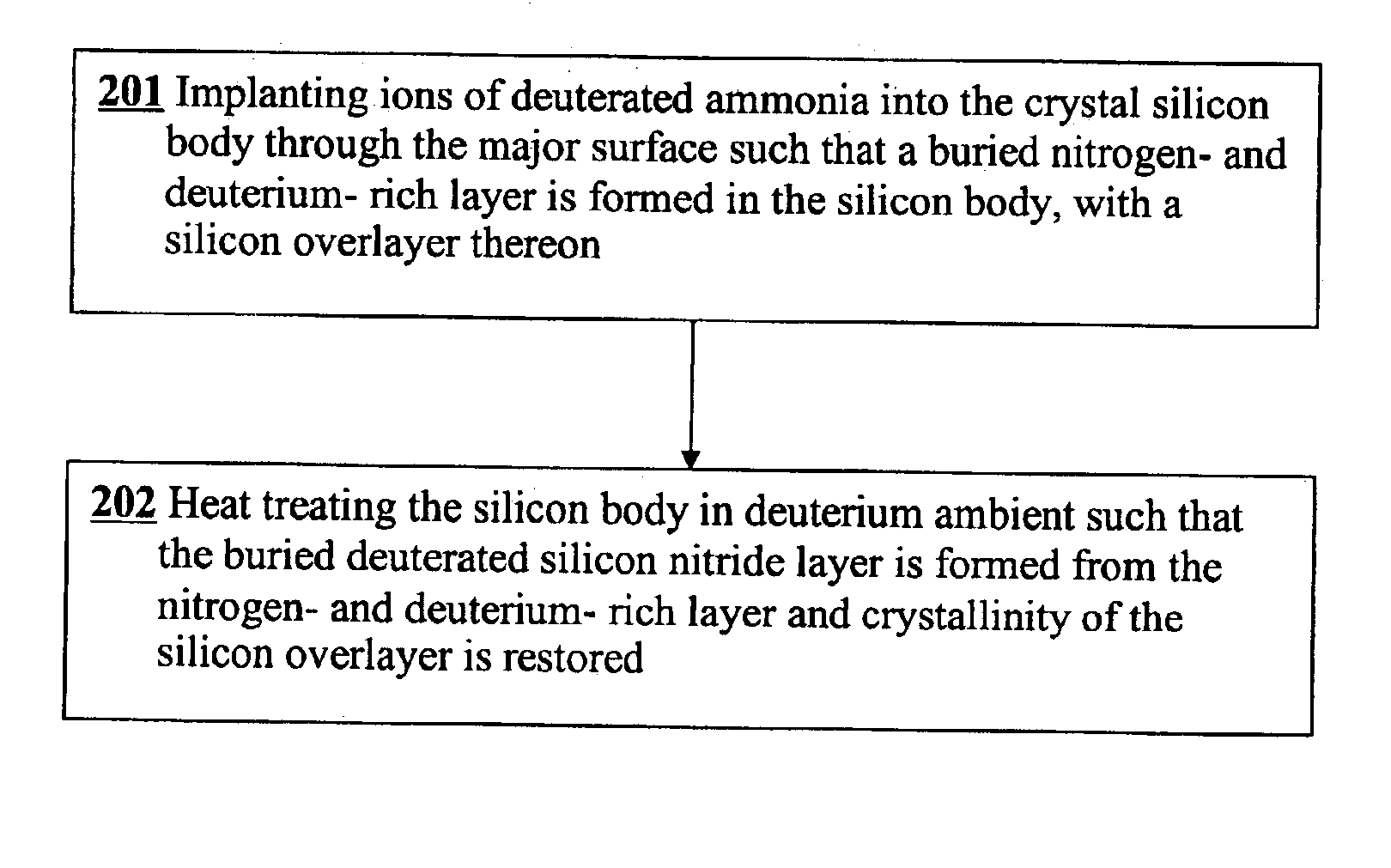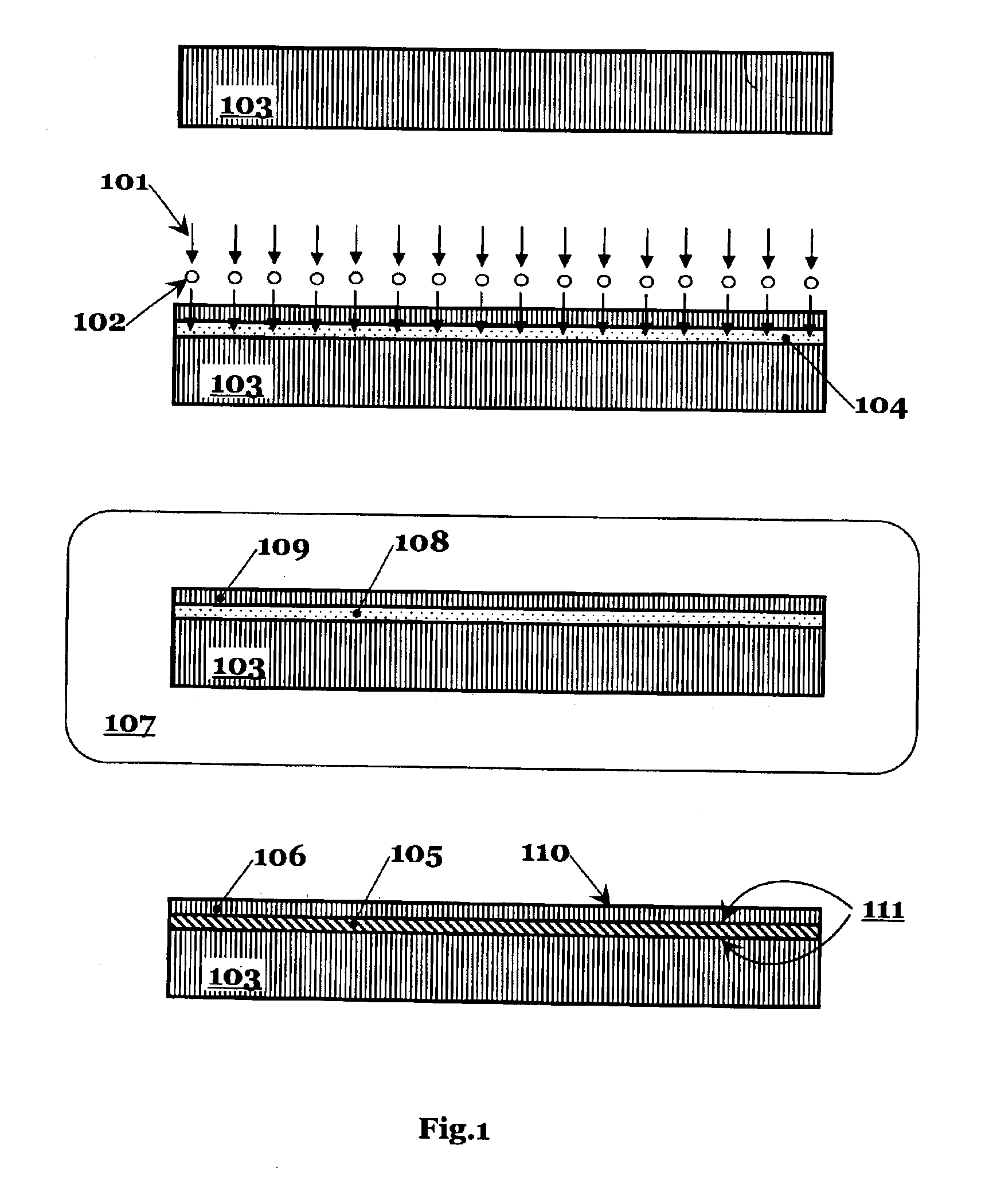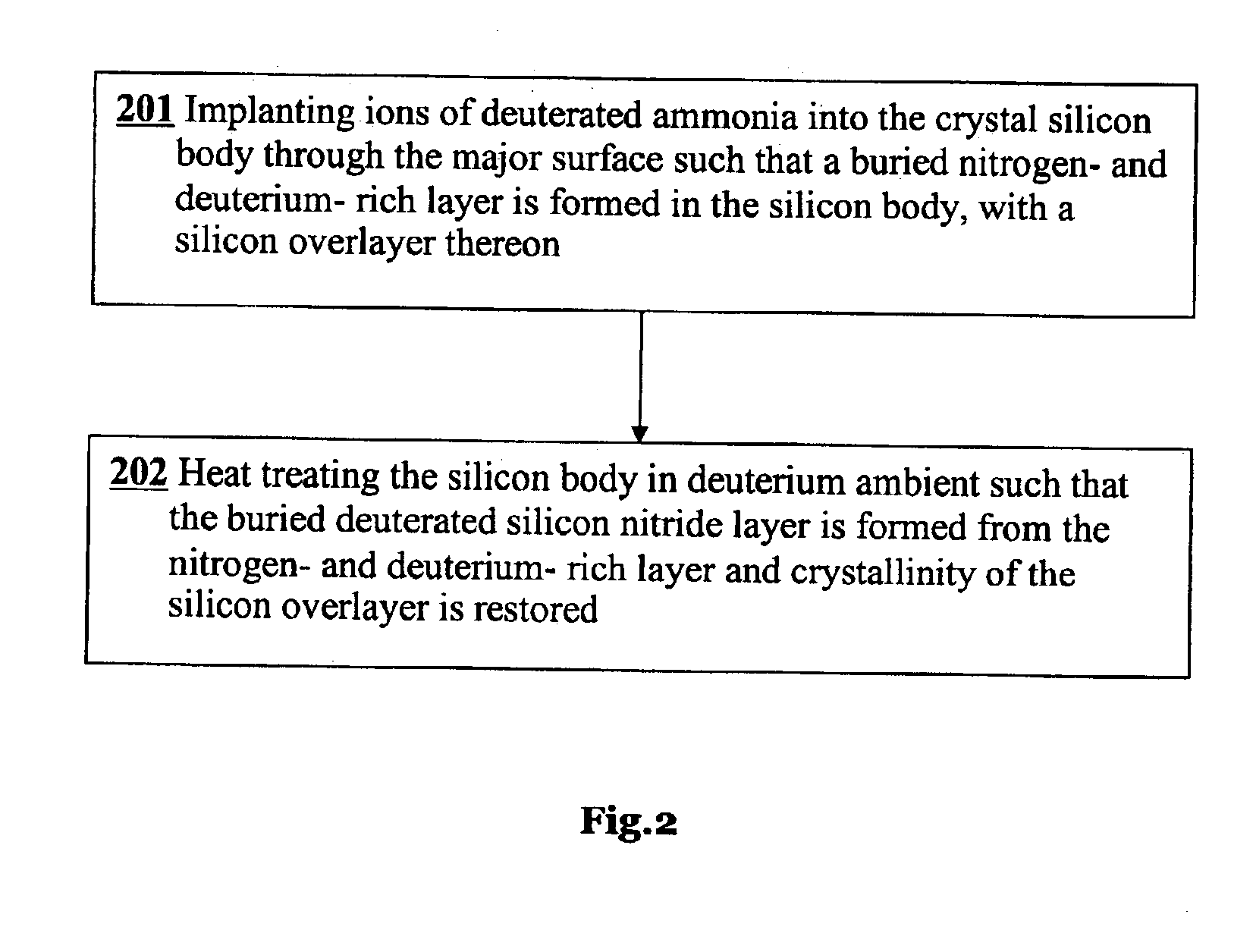Method of making starting material for chip fabrication comprising a buried silicon nitride layer
a technology of silicon nitride and starting material, which is applied in the direction of semiconductor devices, electrical apparatus, transistors, etc., can solve the problems of excessive nitrogen in the middle of the layer, undesirable bubbles, and nitrogen gas bubbles inside the layer
- Summary
- Abstract
- Description
- Claims
- Application Information
AI Technical Summary
Benefits of technology
Problems solved by technology
Method used
Image
Examples
Embodiment Construction
ic sectional views illustrating process flow steps for manufacturing a SOI substrate using separation by an implanted specie.
[0037]FIG. 2 shows the inventive process sequence due to the first preferred embodiment.
[0038]FIG. 3 shows the depth distribution of protium, deuterium, and nitrogen if they are implanted into a silicon wafer in form of ammonia (at 85 keV) or deuterated ammonia (at 100 keV).
[0039]FIG. 4 shows the depth distribution of protium, deuterium, and nitrogen if they are implanted into a silicon wafer in form of ammonia (at 850 keV) or deuterated ammonia (at 1 MeV).
[0040]FIG. 5 shows plots of projected ranges for nitrogen, deuterium, and protium as a function of implantation energy for implanted ND3 or NH3 ions.
[0041]FIG. 6 shows the inventive process sequence for to the second preferred embodiment
DETAILED DESCRIPTION OF THE FIRST PREFERRED EMBODIMENT
[0042]This invention allows one to fabricate SOI wafers with reduced thermal resistance between a single crystal silicon...
PUM
 Login to View More
Login to View More Abstract
Description
Claims
Application Information
 Login to View More
Login to View More - R&D
- Intellectual Property
- Life Sciences
- Materials
- Tech Scout
- Unparalleled Data Quality
- Higher Quality Content
- 60% Fewer Hallucinations
Browse by: Latest US Patents, China's latest patents, Technical Efficacy Thesaurus, Application Domain, Technology Topic, Popular Technical Reports.
© 2025 PatSnap. All rights reserved.Legal|Privacy policy|Modern Slavery Act Transparency Statement|Sitemap|About US| Contact US: help@patsnap.com



